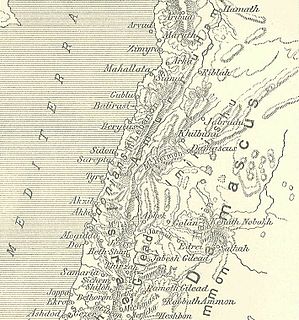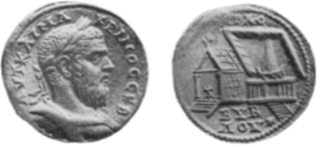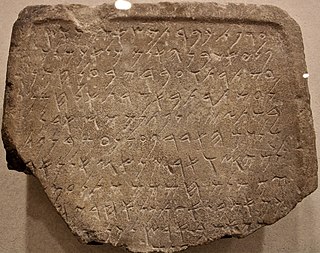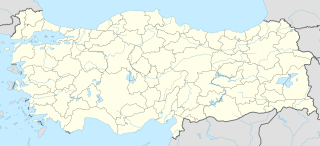 W
WAmmittamru II was a king of the ancient Syrian city of Ugarit who ruled from 1260 to 1235 BC. He reigned for 25 years, being the son of former king Niqmepa, who was famously forced to sign a treaty of vassalization to the Hittites.
 W
WAmmunira was a king of Beirut in the mid-fourteenth century BCE. He is mentioned in several of the Amarna letters, and authored letters EA 141-43.
 W
WAmmurapi was the last Bronze Age ruler and king of the ancient Syrian city of Ugarit. Ammurapi was a contemporary of the Hittite King Suppiluliuma II. He wrote a preserved vivid letter RS 18.147 in response to a plea for assistance from the king of Alashiya.
 W
WArchaeological Ensemble of Tárraco is inscribed as UNESCO world heritage site since 2000. It is situated in Tarragona.
 W
WAr-Halba was the third known ruler of Ugarit, an Ancient Syrian city state in northwestern Syria, reigning for no less than two years, possibly from 1315 to 1313 BC. Succeeding king Niqmaddu II.
 W
WIn ancient Levantine mythology, Azizos or Aziz is the Palmyran Arab god of the morning star. He is portrayed as riding a camel with his twin brother Arsu, although one source says that "Azizos is depicted as a horseman, whereas Arşu is a cameleer." He was venerated separately in Syria as god of the morning star, Phosphoros, in company with the astral god Monimos, Hesperos.
 W
WBaʽalat Gebal, 'Lady of Byblos', was the goddess of the city of Byblos, Phoenicia in ancient times. She was sometimes known to the Greeks as Baaltis or Atargatis.
 W
WBithia or Bitia was a Phoenician, Carthaginian, and Roman town located near Chia in the extreme south of Sardinia, Italy. Most of the ruins have been submerged underwater.
 W
WCamarata was a Carthaginian and Roman port on the Mediterranean near Siga in Mauretania. Under the Romans, it was part of the province of Mauretania Caesariensis. Its ruins are thought to be those at the mouth of the Wadi Ghazer at Sidi Djeloul in Sidi Safi, Algeria. The maritime town was near Siga.
 W
WCerro del Villar, located in the mouth of Guadalhorce river, southern Spain, was a Phoenician city founded in the ninth century BC. It was abandoned possibly in 584 BC. Since 2003, there have not been any archeological excavations. Previous excavations were directed by María Eugenia Aubet.
 W
WDali is a large village in Cyprus, located south east of the capital Nicosia and close to the ancient city of Idalion. In 2001, it had a population of 5,834. By 2011, the population had almost doubled to 10,466.
 W
WKfarhazir is a village in the Koura District of Lebanon. It is 350 meters above sea level, and has an area of 12.1 square kilometres (4.69 sq mi) - the largest town in Koura by size, with a population of about 2000. The population are Greek Orthodox and Maronite.
 W
WThe Masub inscription is a Phoenician inscription found at Khirbet Ma'sub near the Palestinian village of Al-Bassa. It is also known as KAI 19.
 W
WMeninx is a Tunisian archaeological site located on the southeastern coast of the island of Djerba, near the present city of Henchir El Kantara. It stretches 2 kilometers (1.2 mi) long and 800 meters (2,600 ft) wide, some of which has probably been submerged by the sea. The theater is at 33.688° N, 10.925° E.
 W
WMyriandus was an ancient Phoenician port on the Mediterranean Sea's Gulf of Alexandretta. Its ruins are located near the modern city of İskenderun in southern Turkey.
 W
WNiqmaddu III was the seventh known ruler and king of Ugarit, an Ancient Syrian citystate in northwestern Syria, reigning from 1225 to 1220 BC, succeeding king Ibiranu. He took his name from the earlier Amorite ruler Niqmaddu, meaning "Addu has vindicated" to strengthen the supposed origins of his Ugaritic dynasty in the Amorites.
 W
WOualidia is a coastal village in Morocco situated between El Jadida and Safi. It is located beside a protected natural lagoon and has been called Morocco's "oyster capital," a reference to the significant role shellfish harvesting plays in the local economy.
 W
WSexi, also known as Ex, was a Phoenician colony at the present-day site of Almuñécar on southeastern Spain's Mediterranean coast.
 W
WSumur was a Phoenician city in what is now Syria. Zemar was a major trade center. The city has also been referred to in English publications as Simyra, Ṣimirra, Ṣumra, Sumura, Ṣimura, Zemar, and Zimyra.
 W
WThymiaterium or Thymiaterion was an ancient Carthaginian colony in present-day Morocco. It was founded by Hanno the Navigator on his journey of exploration beyond the Pillars of Hercules. The city is mentioned in the Periplus (Περίπλους). The manuscript is a copy of another Greek work which translated the Punic original and is part of the Codex Palatines Graecus 398 which belongs to the Heidelberg University.
 W
WThe Yehawmilk stele, de Clercq stele, or Byblos stele, also known as KAI 10 and CIS I 1, is a Phoenician inscription from c.450 BC found in Byblos at the end of Ernest Renan's Mission de Phénicie. Yehawmilk, king of Byblos, dedicated the stele to the city’s protective goddess Ba'alat Gebal.